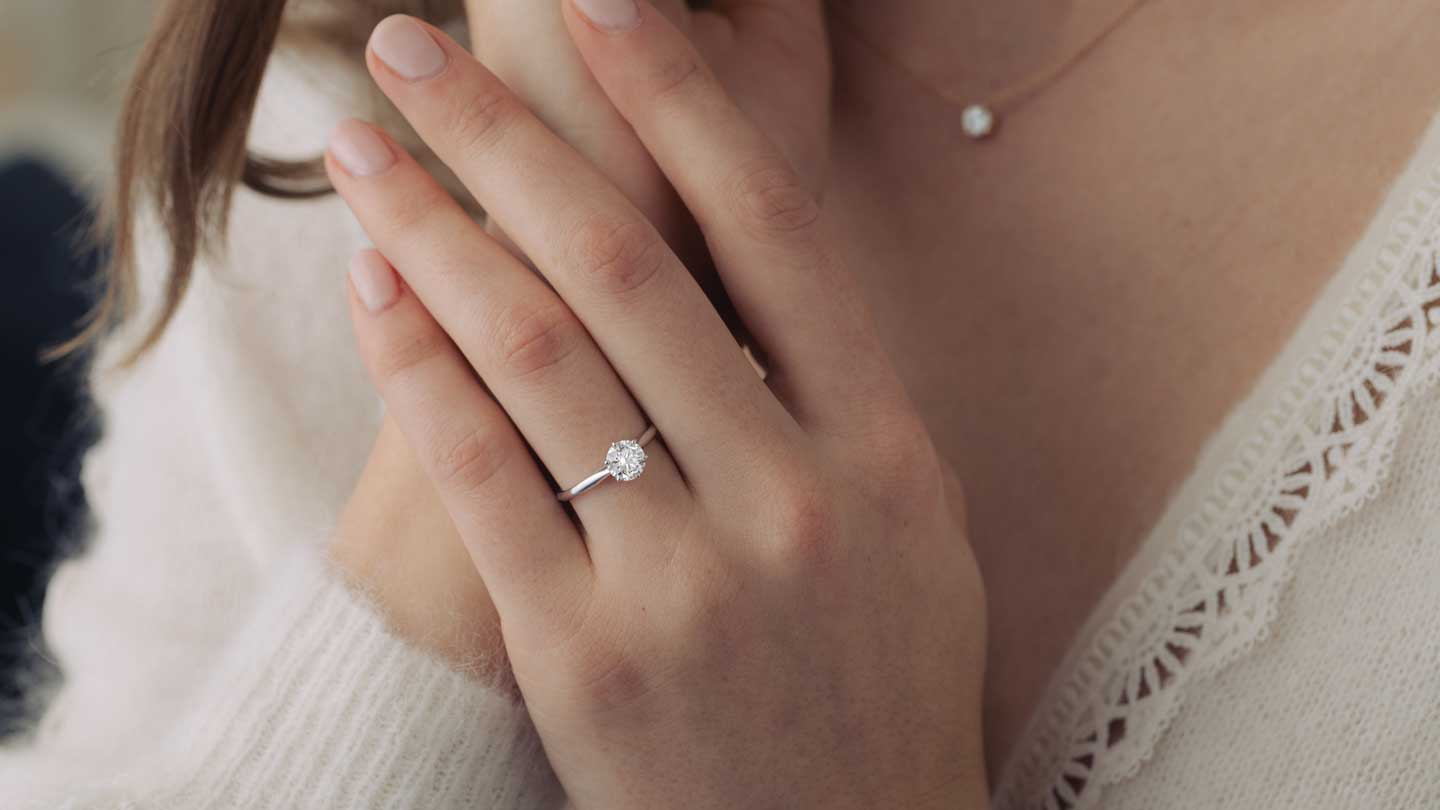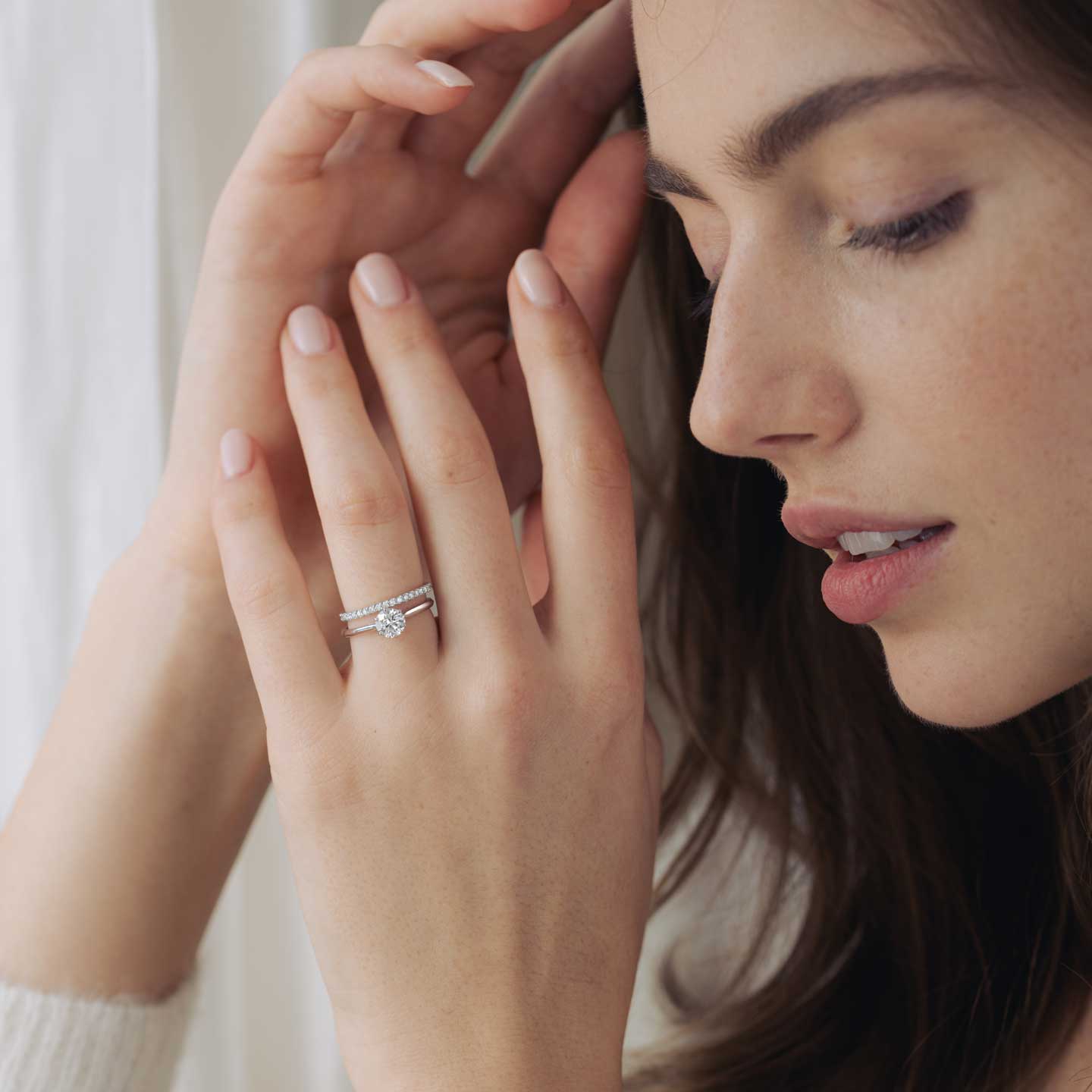Choosing the metal is an important step in the choice of a piece of jewelry because, of course, you don't want to get it wrong.
In jewelry, there is a wide variety of precious metals and it is not always easy to find your way around them!
Is platinum a good choice? What are the differences between platinum and white gold? Is platinum suitable for an engagement ring or a wedding band?
These are questions that you may be asking yourselves and to answer them, we have decided to offer you this guide to make you more aware about platinum jewelry!

The basics
Before going into detail, let's first go over a few essential notions.
—— 1. What is platinum?
In ancient Egypt, platinum was already used as an ornament for sarcophagi, along with gold. Traces of this metal can also be found in the time of the Incas on jewelry and other ornaments.
An anonymous metal for centuries, it was officially discovered by the Spanish conquistadors in Colombia around the year 1500. Then called platina which means small silver because of its grey-white colour, it was often identified as a worthless base metal.
However, platinum is actually a very exclusive metal, up to 30 times rarer than gold!
To help you understand this, it is estimated that gold is produced at around 2500 tonnes per year. Platinum production per year is only about 160 tonnes. Just imagine!
Today, the exclusivity of platinum is well known to the general public and has even spread into popular culture: for example the famous platinum disc that symbolises the sale of one million albums for an artist or, for the more gamers among us, the ultimate trophy in the world of video games.
a. What does platinum look like?
Like gold, raw platinum, also known as native platinum, can be found in the form of nuggets or flakes, but it is often found in rocks mixed with other metals such as iron, nickel and other metals of the same family.
Native platinum is a naturally white precious metal, which is one of the reasons why it is so sought after in jewelry... more on this later.
b. What makes platinum so special?
Platinum is most notably recognized for its remarkable density, being 40 to 60% heavier than gold of the same volume.
Why does this matter? Because platinum’s density contributes to its remarkable resistance to external elements like chemicals and acids, making it a highly durable metal that can withstand the passage of time. If you're searching for a material that will endure the years and be passed down through generations, platinum is an excellent choice.
In addition to its strength, platinum is a highly ductile metal, which means it can be shaped with incredible precision while maintaining its structural integrity. This quality is what makes it indispensable in fields ranging from jewelry to medicine and engineering.
Platinum is highly resistant to abrasion, meaning it withstands wear caused by friction. It is a metal made to last, even for those with manual professions.
c. The price of platinum
Platinum, an even rarer metal than gold, is a metal whose production is more complex and expensive than that of gold. Although it may sometimes be cheaper per gram, it is 40% denser than gold, meaning that to create a piece of jewelry of the same weight, more material is needed.
Due to its nature, platinum is more challenging to work with, requiring additional time and expertise. This explains why, even though platinum may be less expensive per gram, its manufacturing process is costlier.
It is this combination of rarity, density, and the complexity of its production that makes platinum a more expensive metal overall.
—— 2. What are the different qualities of platinum?
Platinum is generally not processed very much. In most cases, it is a very pure metal, so its legal grades are generally high, at least 85% pure platinum in an alloy.
For clarity, here are the 3 highest legal grades you are likely to encounter:
-
850/1000 platinum is 85% pure platinum.
-
900/1000 platinum is 90% pure platinum.
-
950/1000 platinum is 95% pure platinum.
*At Gemmyo, we only use 950/1000 platinum.
What is legal title?
The term legal title or titration corresponds to the rate of pure metal present in its alloy.
For example, 950/1000 means that there is 95% pure platinum in the alloy; the rest is made up of other metals (generally iridium).
Legal title is also a so-called standard grade, meaning that it is the same everywhere.
To give you a concrete example: the 950/1000 platinum we use at Gemmyo to make our jewelry is strictly the same as the one used by the famous Maisons of the Place Vendôme who also use this quality.
You are probably wondering how to recognise a particular quality? The most effective method is to look at its hallmark!
Called the title or guarantee hallmark, the hallmark is an official and obligatory mark affixed by the State (French customs) on a precious metal to confirm its authenticity.
Where to find this mark on a piece of jewelry?
In France, all handcrafted platinum jewelry weighing more than 3 grams must be hallmarked. There are several methods for affixing a hallmark to a piece of jewelry. At Gemmyo, they are all hallmarked in the traditional way with a small chisel and a hammer.
On a ring you will often find your hallmark opposite your gemstone(s) and on the outside of the setting!
Contrary to what you might think, the hallmark is not a defect, but a guarantee of the quality of a jewel. It is a sort of label for the jewel.
At Gemmyo, we only use 950/1000 platinum to make our jewelry, a grade recognisable by its dog's head hallmark.

Now that we have reviewed the basics, it is time to get to the heart of the matter and determine whether platinum is a good choice for your jewelry!
We will now discuss its main characteristics in more detail, then we will look at some tips and finally we will see its advantages and disadvantages!
The main characteristics of platinum
Instinctively, when platinum is mentioned, we are usually immediately reassured that it is a great quality of metal for jewelry... let's try to understand why.
—— 1. 950 platinum, the most noble metal
Platinum is the perfect metal for everyday jewelry. Its exceptional density makes it highly resistant, ideal for handling the challenges of daily life. This durability makes it an excellent choice for rings, which endure constant friction.
Yet, this strength demands specialized craftsmanship. Platinum melts at 1768°C, significantly higher than gold (1064°), which requires the use of advanced equipment to work with it.
Thanks to its resistance to corrosion and abrasion, platinum guarantees unrivaled longevity. If you’re looking for a piece of jewelry that will stand the test of time and be passed down, platinum is a wise choice.
Additionally, platinum is hypoallergenic, making it ideal even for the most sensitive skin.
For pieces worn daily, such as wedding bands or engagement rings, 950 platinum is strongly recommended.
Beyond its durability, platinum is highly valued in jewelry for its beautiful color and lasting quality.

—— 2. Platinum, an eternal colour
As we have seen, one of the main properties of platinum is that it is a naturally white metal.
In jewelry making, it is barely transformed or mixed with other metals, and is even the purest metal used.
What does this mean in practice?
Your platinum jewelry will not lose its colour over time!
This means that even after many years your platinum jewelry will remain white, just like the first day.
Easy to care for, it is therefore often chosen for jewelry that is to be worn on a daily basis, such as wedding bands.
Perfectly suited if you want a white metal for your jewelry, we often hear our customers compare it to white gold, is this justified?
—— 3. Which metal should I choose between white gold and platinum?
Although platinum and white gold are both popular for daily wear jewelry, they are often mistaken for each other. The main difference lies in their color, platinum has a more subtle greyish tint, while white gold tends to have a brighter, whiter appearance.
How to easily tell them apart?
It’s all about the weight. Platinum is denser and thus heavier than white gold.
Which one to choose?
Both metals have their distinct characteristics:
18k white gold may change color over time, becoming slightly yellowish, and requires regular care to maintain its brilliance. If you want a metal that retains its shine without the need for regular maintenance, platinum is the better option. Ultimately, whether it’s for a wedding ring or an engagement ring, both platinum and white gold are top-tier metals. The choice depends on your personal style and needs.
Did you know that?
Rhodium, used in plating white gold or black gold, is actually part of the platinum family.
It is even rarer than platinum,around 100 times rarer than gold, which contributes to its high price.
—— 4. Platinum is a metal that goes well with all gemstones
Synonymous with eternity and refinement, platinum is ideal with precious stones such as diamonds or sapphires.
It also goes very well with stones such as tanzanite or aquamarine, but there are always slightly less harmonious combinations. It is a matter of taste and preference of course, but some say that stones such as citrine or garnet tend to look much better on yellow gold or even rose gold than on a white metal which will bring out their brilliance.
However, it can be argued that platinum's neutral, silvery white colour works well with all stones and skin tones. So all you have to do is choose your stone
You can't go wrong with platinum!
Most popular stones to be associated with platinum
Diamond Aquamarine Sapphire Tanzanite Tourmaline Ruby Emerald TsavoriteLeast popular to be associated with platinum
GarnetWhat should we remember about platinum?
950 platinum is the highest purity metal used in jewelry, a true symbol of luxury and exceptional quality.
Thanks to its resistance to corrosion, it ensures lasting durability for those who wish to pass down their jewelry.
It effortlessly pairs well with any colored stone.
Ideal for everyday pieces like wedding bands or engagement rings, platinum is designed to last.
Furthermore, its hypoallergenic properties make it suitable for the most sensitive skin.

To conclude
950 platinum is the best quality platinum you will find in jewelry.
It is a timeless metal that we recommend for all types of jewelry and especially for everyday jewelry such as wedding bands or engagement rings.
Platinum is a naturally white and very pure metal. This means that your platinum jewelry will never lose its colour over time. The perfect symbol for a piece of jewelry that should count and last, don't you think?


















